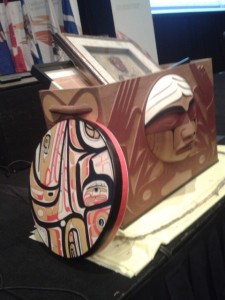We Are Part of a Sacred Covenant
by Elyse Brazel
On Saturday and Sunday, I had the opportunity to attend the 4Rs Youth Summit at the Truth and Reconciliation Commission hearings in Edmonton. One hundred thirty four young leaders (ages 18-30) from Indigenous and non-Indigenous communities across the country were given the rare opportunity to meet face to face and to have a dialogue about what we want our future to look like.
 These young leaders were brought together by 14 organizations representing 3 to 4 million Canadian youth, including the Assembly of First Nations, Congress of Aboriginal Peoples, Boys and Girls Clubs of Canada, Big Brothers Big Sisters of Canada, YMCA and YWCA Canada, the Inspirit Foundation and Community Foundations of Canada. The name “4Rs” stands for respect, reconciliation, reciprocity and relevance.
These young leaders were brought together by 14 organizations representing 3 to 4 million Canadian youth, including the Assembly of First Nations, Congress of Aboriginal Peoples, Boys and Girls Clubs of Canada, Big Brothers Big Sisters of Canada, YMCA and YWCA Canada, the Inspirit Foundation and Community Foundations of Canada. The name “4Rs” stands for respect, reconciliation, reciprocity and relevance.
Over the 2-day event we talked about many things including identity and privilege. We listened to each other’s lived experiences and had real conversations about the intergenerational effects of the Indian Residential Schools system on individuals, families and communities. We examined the stereotypes held by Canada’s dominant culture that perpetuates discrimination and racism. These conversations were both challenging and engaging, and they forced me to re-examine my assumptions. We found out that we were often not speaking the same language. Some people said they didn’t think reconciliation is possible because the word implies that a good relationship between First Nations and settlers existed in the first place. Some Indigenous youth took issue with the unifying phrase “We are all Canadian” that we often hear thrown around because they don’t identify as “Canadian”. Some newcomers to Canada struggled with the dichotomy of Indigenous/non-Indigenous because they don’t fit in either category. Many of them were offended to be slotted into the “settler” category knowing that they migrated to Canada because of the impacts of European colonialism and the destructive environmental impacts of global capitalism in their home countries.
After our conversations, I realized that the process of reconciliation is going to be long and complicated, but that this movement is 4R future. Together, Indigenous and non-Indigenous, we have found a shared purpose in carrying out justice for Indigenous people and in creating a movement that will work towards building a country we can all be proud of. Canada may be a wounded and broken country, but we can agree to commit ourselves to move forward in unity, establishing new and healthy relationships. We were reminded that when the treaties were first signed we became a part of a sacred covenant; that we, Indigenous and non-Indigenous people, would live together in peace and prosperity. As Christians, a covenantal people, we should recognize what kind of commitment that is.
In the expression of reconciliation offered by the 4Rs, we promised to keep the sacred fires burning and the drums beating beyond the mandate of the TRC. Our gift was a drum, its design inspired by the Bentwood Box, painted in the 4 colors of the medicine wheel that speaks of balance and harmony.
It’s funny that the theme for this TRC was wisdom but we leave the TRC still not knowing what the road to reconciliation will exactly look like. This is okay. What we do have is the elders’ blessing, a reminder that even though me may not see the path, we can still walk it in a good way and with the reassurance of knowing that we are walking this long path together.








